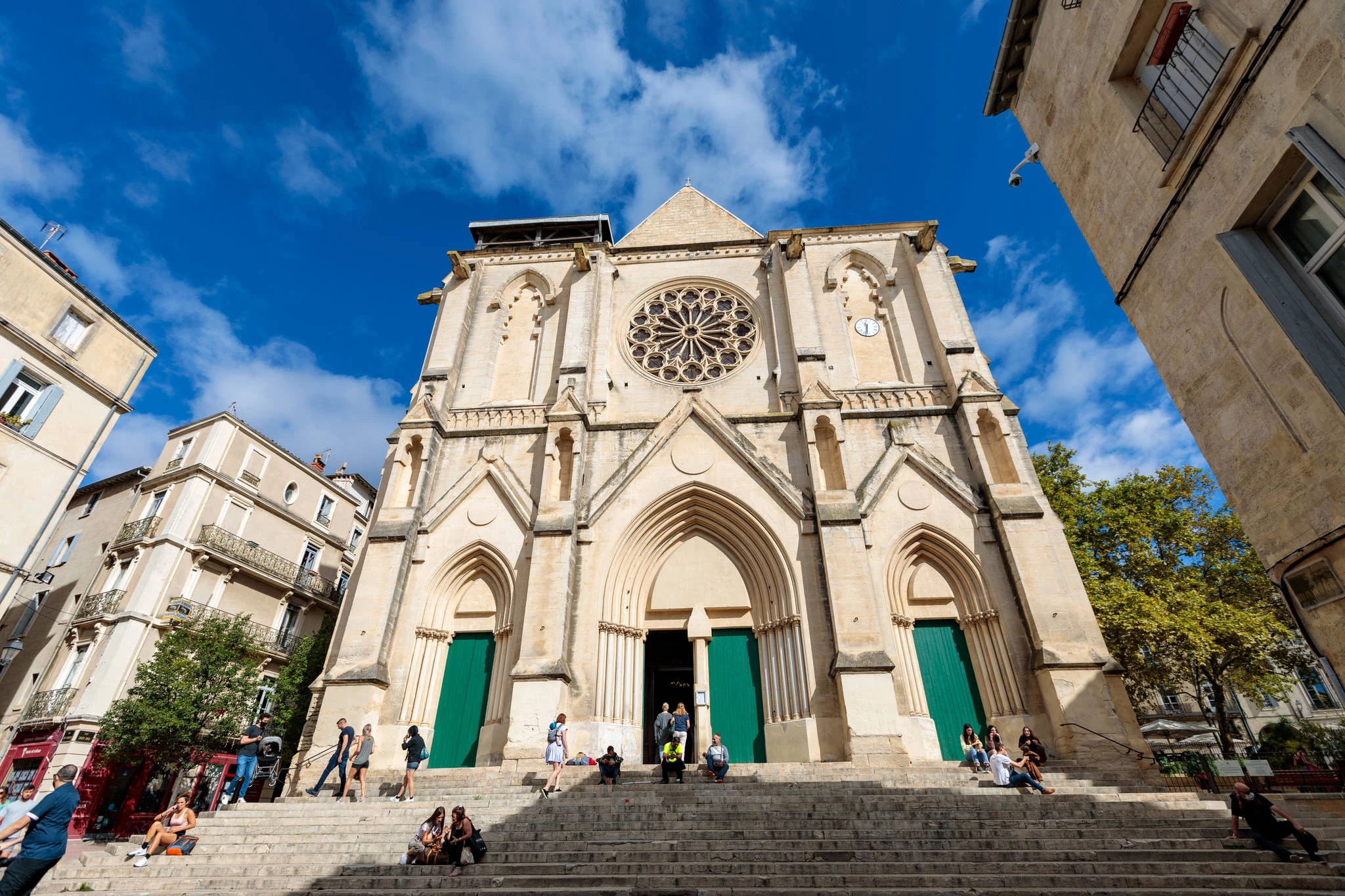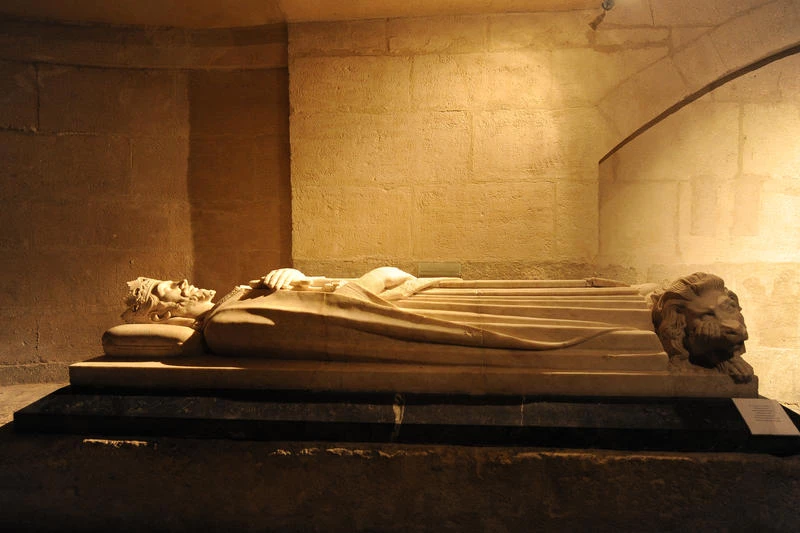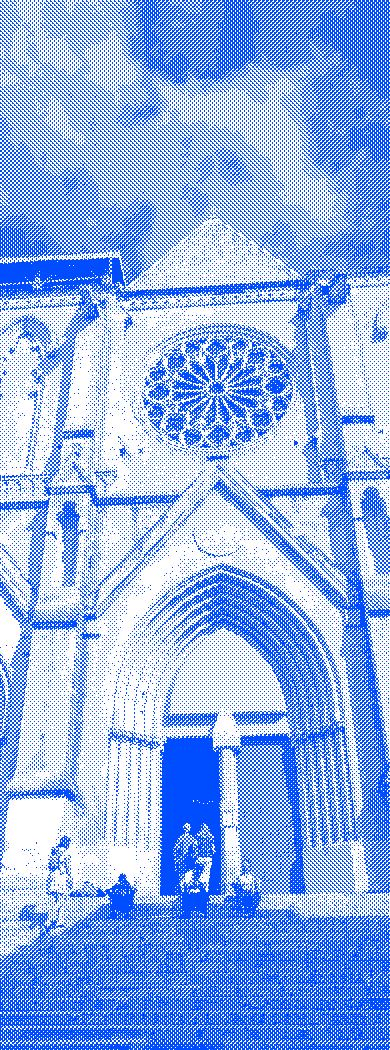Montpellier's churches
Since the 1905 law of separation of Church and State, the City of Montpellier has owned 5 churches:
- the Basilica of Notre-Dame-des-Tables,
- the Church of Saint-Denis,
- the Church of Saint-Matthieu,
- the Church of Saint-Roch,
- the Church of Sainte-Croix de Celleneuve.
With the support of DRAC Occitanie, their furnishings are notably the subject of a plan-objet, aimed at improving knowledge and conservation of the objects.
You can discover more about the history, architecture and furnishings of the following churches:
- L'église Saint-Roch,
- L'église Saint-Denis,
- L'église Notre-Dame-des-Tables.
Saint-Roch church

L'église Saint-Roch is a neo-Gothic church in the heart of Montpellier, built in the 19th century. Saint Roch has been venerated by Montpellier residents since the late Middle Ages. Known the world over, this saint, protector of the plague, is also the patron saint of pilgrims.
The present-day Saint-Roch church is partly built on the site occupied by the Saint-Paul church and the Trinitaires convent before the Revolution.
At the start of the Revolution, the Saint-Paul church was maintained in its function. In 1790 it became the seat of one of the three parishes in the town center, following the suppression of the religious houses and the parish redistribution desired by the municipality.
The building, sold as national property to Jean-Baptiste Accariès on 12 thermidor an IV (July 30, 1796), was used for a time as a "depot for lighting and heating the guard corps". It was only after the Concordat was instituted that the parish's conseil de fabrique took over the rental of the church in its own name for the needs of the now fully re-established cult.
Saint-Denis church

A first Saint-Denis church is attested in Montpellier at the end of the 11th century. Having become a parish in the early 12th century, it was located on the Montpelliéret hill to the northeast of the city, and was destroyed in 1562 during the Wars of Religion.
The foundation stone of the new Saint-Denis church was laid on August 30, 1699 in the faubourg de la Saunerie, on the site of a former Notre-Dame des Tables cemetery, at the crossroads of the Saint-Martin de Prunet and Béziers roads. The building, of great sobriety, was designed by architect Augustin Charles d'Aviler (1653-1701), a pupil of Hardouin-Mansart, then official architect to the States of Languedoc and the City of Montpellier.
The plan adopted is that of a Latin cross with very shallow projecting arms, no side chapels, with a two-bay nave and a one-and-a-half-bay choir.
Notre-Dame-des-Tables church

This former chapel of the Jesuit College, now a parish church, has taken on the name of the Romanesque church Notre-Dame-des-Tables.
Ancient Jesuit chapel
Built by architect Jean Giral, between 1707 and 1748.
In the entrance drum, a sky, perhaps the work of Jacques Giral, painter to the king and brother of the architect, was rediscovered and restored in 1992.
Chapel crypt
City cradle
The existence of the Crypt is attested as early as Romanesque times, and the Notre-Dame clock punctuated the life of the city until the Revolution. Originally dedicated to the Virgin Mary and called Sainte-Marie, the church took the name Notre-Dame des Tables in the 13th century, when moneychangers settled at the foot of its walls.
After several destructions and reconstructions during the 16th and 17th centuries, it was definitively destroyed in 1794. On the site cleared by its demolition, the Halle à colonnes was built, completed in 1806, to serve as a market for Montpellier residents. The crypt was blocked off. Only a statue of the Virgin Mary, erected beneath the Halle, remained as a reminder of the site's original purpose.
Discovered in the 20th century
In 1913, the market was demolished stone by stone, and later, excavations uncovered the remains we know today. Although there is now a Notre-Dame des Tables church in Montpellier, it is in fact a church in the rue de l'Aiguillerie, on the square that bears its name. It has no connection with the original church of Notre-Dame des Tables. It is the former chapel of the Jesuit College, which became the parish seat when the church, the cradle of our town, was definitively destroyed. Of the first church, dating from the mid-11th century, only the bottom of the retaining walls and part of the pavement remain.
On the other hand, the following have been preserved: the foundations of the tower, the ambulatory of the southern part of the church from the 12th, and 13th centuries, part of an apsidal chapel, ossuaries that could date from the mid-11th century, as well as 17th-century burial vaults.
.